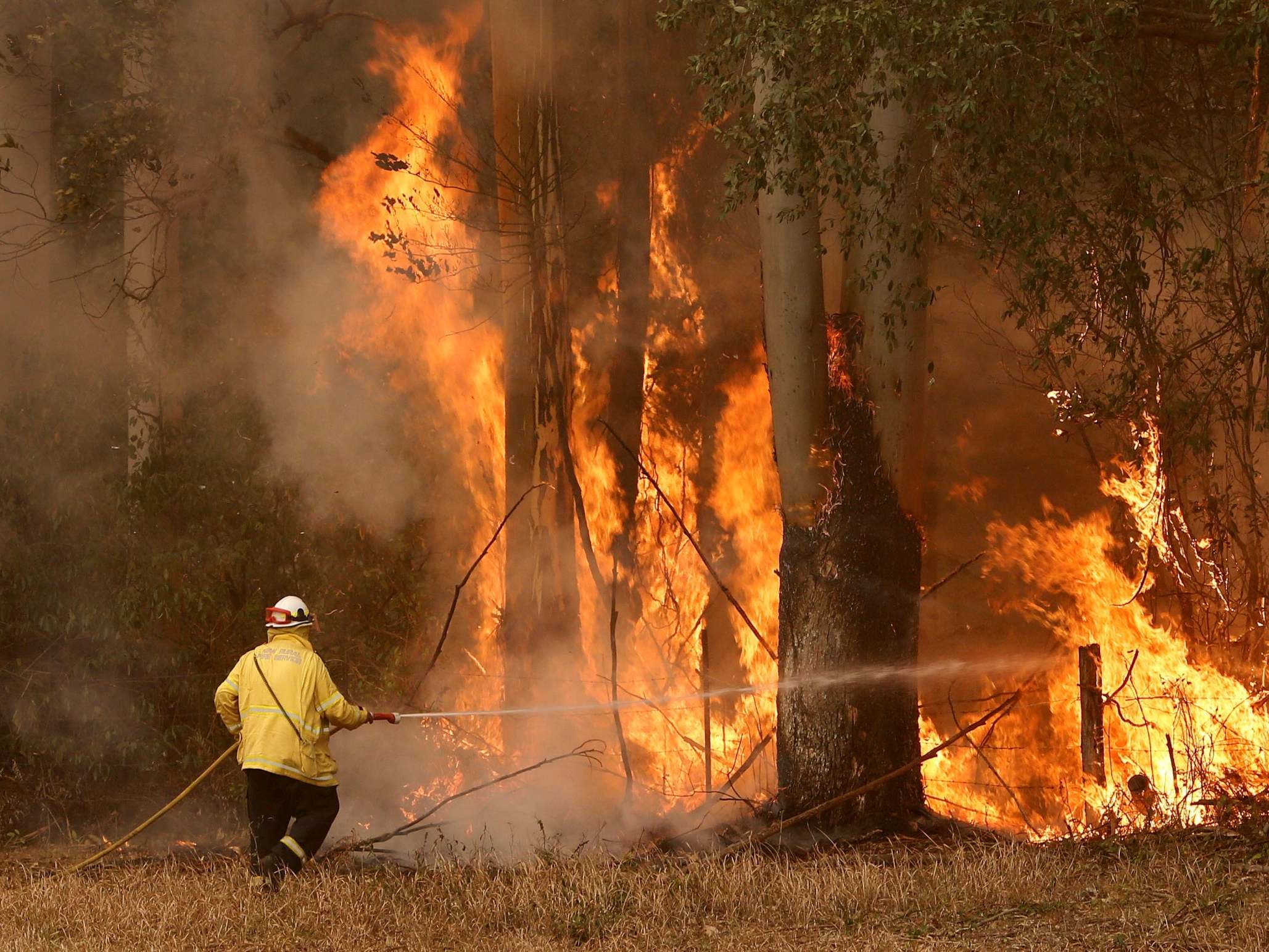‘Like a furnace’: Australia set to see hottest day ever with 50C forecast as devastating bushfires rage
Prime minister Scott Morrison accused of ‘deafening silence’ over climate crisis as dangerous temperatures affect almost entire continent
Your support helps us to tell the story
From reproductive rights to climate change to Big Tech, The Independent is on the ground when the story is developing. Whether it's investigating the financials of Elon Musk's pro-Trump PAC or producing our latest documentary, 'The A Word', which shines a light on the American women fighting for reproductive rights, we know how important it is to parse out the facts from the messaging.
At such a critical moment in US history, we need reporters on the ground. Your donation allows us to keep sending journalists to speak to both sides of the story.
The Independent is trusted by Americans across the entire political spectrum. And unlike many other quality news outlets, we choose not to lock Americans out of our reporting and analysis with paywalls. We believe quality journalism should be available to everyone, paid for by those who can afford it.
Your support makes all the difference.A “once in a lifetime” heatwave is set to sweep across Australia over the coming days, making almost the entire country “like a furnace” with temperatures on course to break records.
Highs of over 50C are expected, with meteorologists warning the heat could break the country’s existing record of 50.7C measured at Oodnadatta, South Australia, in 1960.
The Australian Bureau of Meteorology has said people in the south can expect back-to-back days of 49 and 50 degrees in some remote regions for Wednesday and Thursday.
The soaring temperatures, coupled with a weeks-long bushfire crisis, have already led to some extraordinary stories of bravery, including a 12-year-old boy who escaped with his dog by driving away from the blaze in his family's pick-up truck.
The bureau has weather warnings in place for almost the entire country, with fire warnings issued in Western Australia, New South Wales, South Australia and the Australian Capital Territory.
Diana Eadie, a bureau forecaster, told the Sydney Morning Herald a weak pressure pattern had allowed heat to build, while the late arrival of the monsoon over northern Australia had contributed to the build-up of the “very warm air mass” that would start to move south.
Dr Adam Morgan, a forecaster at the bureau said high temperatures were already marking the beginning of “an exceptional week that’s likely to break numerous December and all-time temperature records across the country. They may even approach or exceed Australia’s warmest day on record, which currently stands at a nationwide average maximum of 40.3C, set on 17 January 2013.”
The warnings come as parts of Australia are being scorched by enormous bushfires that have already destroyed hundreds of homes.
A bushfire on Gospers Mountain, northwest of Sydney, which has spread to cover more than 400,000 hectares, has been upgraded to an “emergency” situation.
There are also numerous smaller fires burning in the vicinity, all of which have created a “public health emergency” in Sydney, Australia’s most populous city, where air pollution has reached levels as much as 11 times higher than the threshold to be classified as “hazardous”.
In Western Australia, firefighters are battling three major bushfires burning an area of more than 20,000 hectares. Two of the fires are threatening lives and homes.
And worse fires are expected as the heat and wind pick up later in the week.

“We’re expecting heatwave conditions to be increasing through the week,” Tom Boeck, a senior forecaster at the Bureau of Meteorology, told the ABC.
“With that, there will obviously be increasing fire danger … probably peaking towards the later part of the week with winds also increasing and that’ll be ahead of a change.”
The country’s prime minister has been accused of “deafening silence” over the issue of climate change, over which Australia has a conspicuously poor record, and which scientists have said has contributed to the likelihood and severity of heatwaves around the world.
According to the ABC, when pressed on the subject, Mr Morrison and his office have repeatedly pointed to a comment he made on 21 November when he said in an interview: “I mean, in February, I acknowledged the contribution of those factors to what was happening in Australia, amongst many other issues.”
In the last 100 years, heatwaves have killed more people in Australia than bushfires, earthquakes, floods and severe storms combined, news.com.au notes.
Last year was the hottest on record for most of the states in the country, with major heatwaves in December and January.
Blistering heat is not unusual during summers in the west of the country but this season has escalated much earlier than usual.
Heatwaves are now becoming more common, getting hotter and lasting longer. Scientists have said Australia could be facing a “dangerous new normal”, and residents in affected areas are calling for a new approach from authorities.

Join our commenting forum
Join thought-provoking conversations, follow other Independent readers and see their replies
Comments